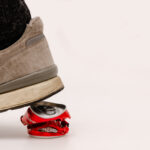This depends. The initial goal after surgery is at least getting to what you had preoperatively. The hope is that from the replacement and a full physical therapy program, is that your ROM is increased by a total of 10-15 degrees.
Typical ROM
The typical ROM for a total knee replacement is 120 degrees of flexion (or knee bend) and zero degrees of extension (or knee straightening). Again, this also depends on your ROM prior to surgery. Hip replacements can get full extension, however, are limited to 90 degrees of hip flexion or bend initially.


